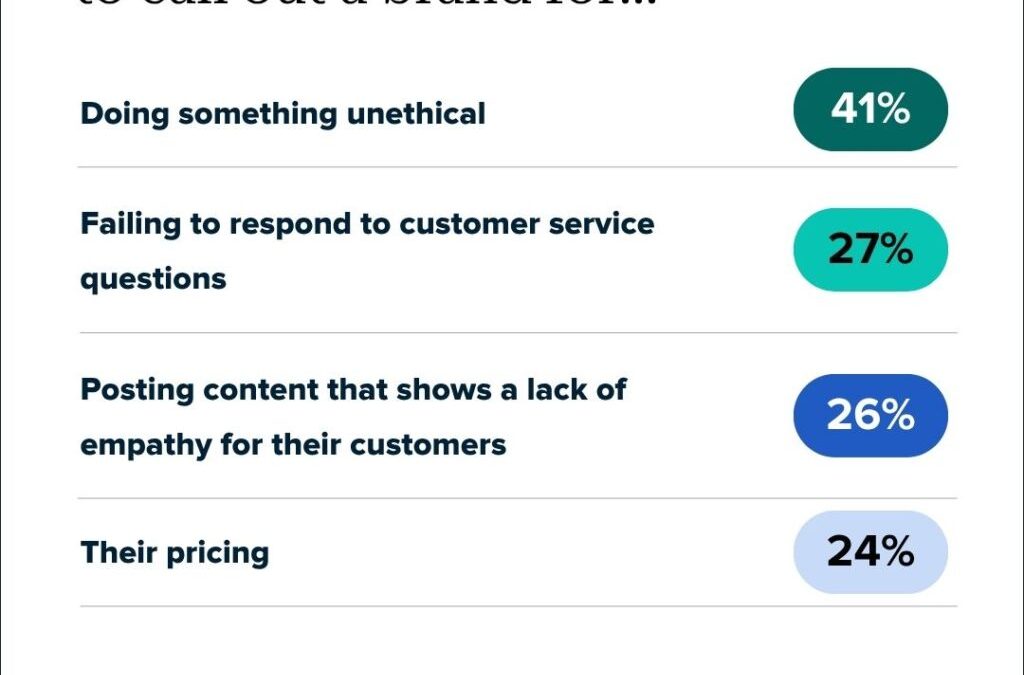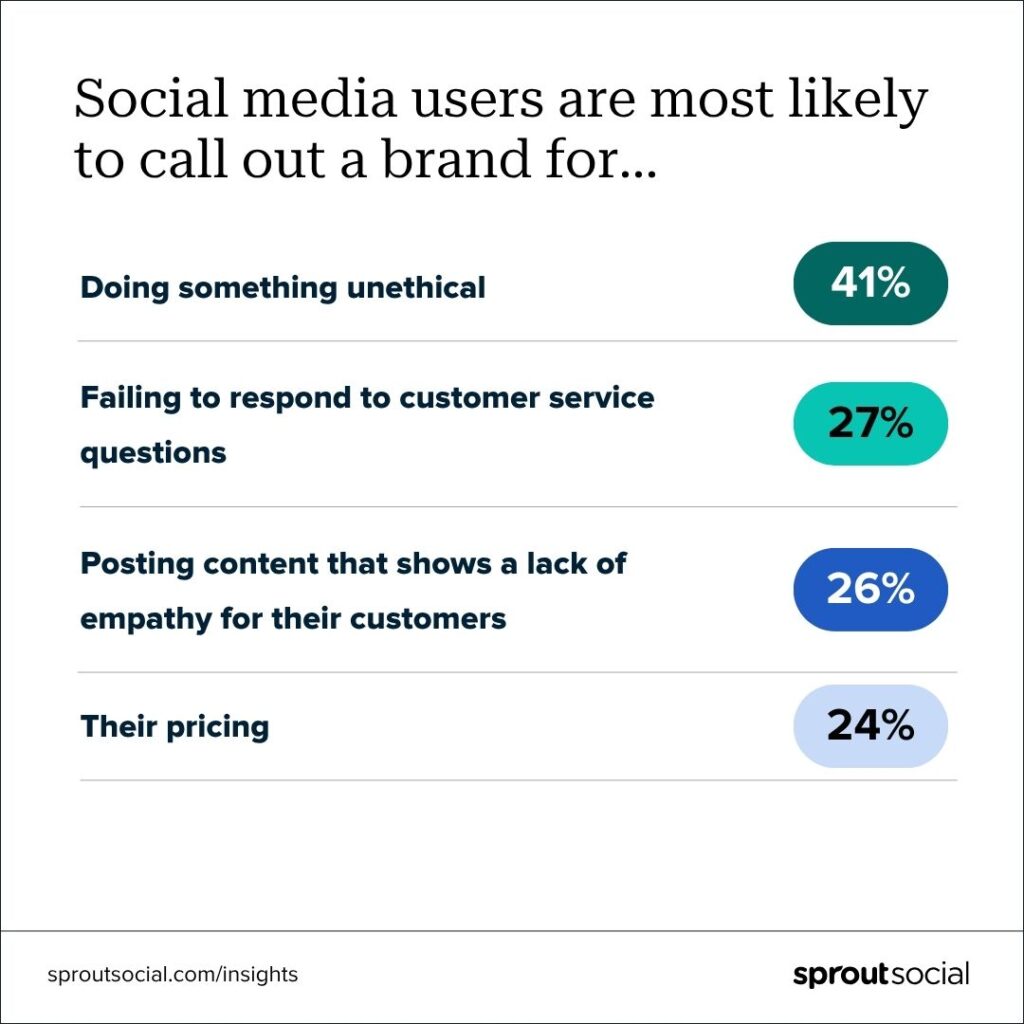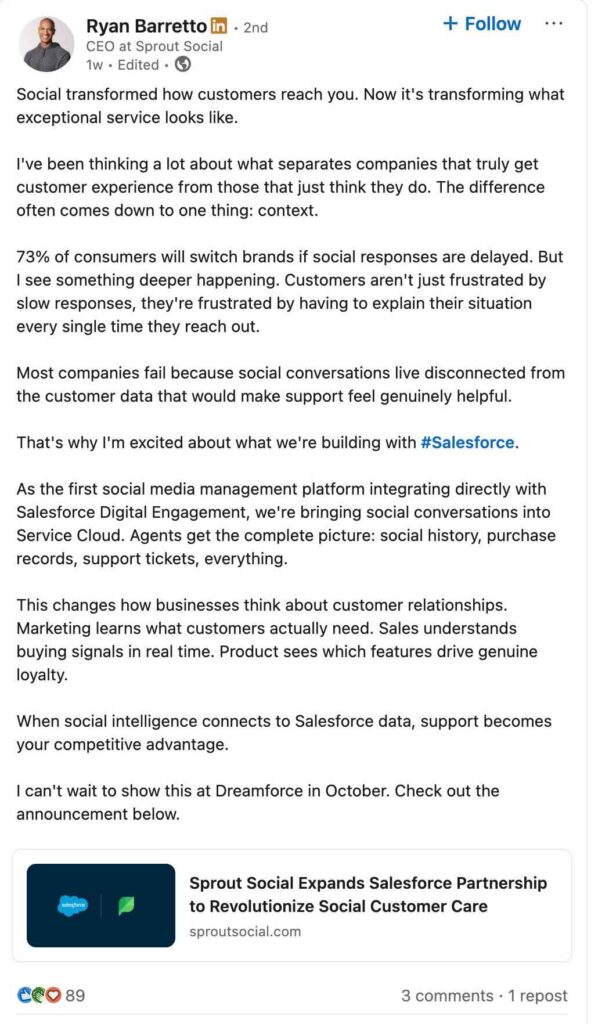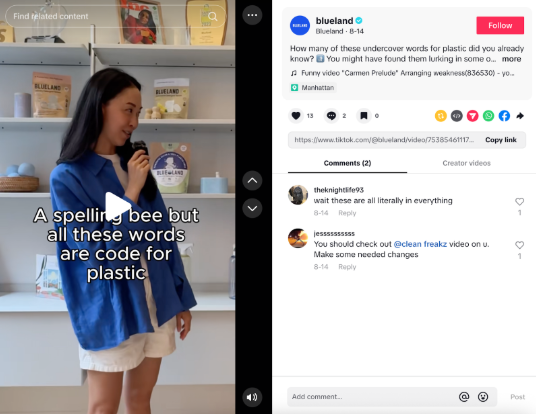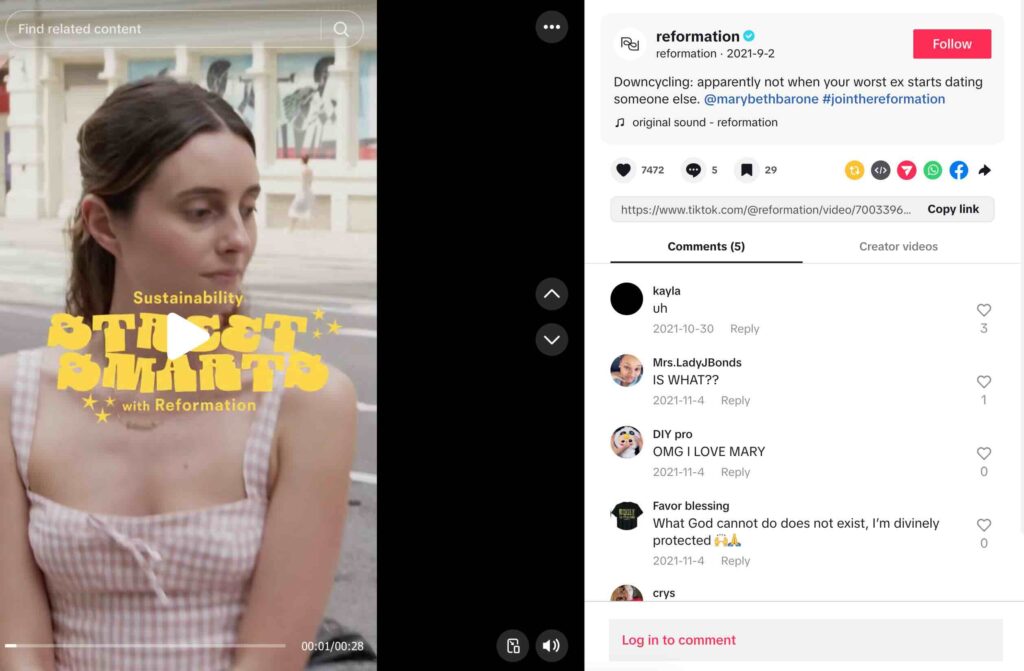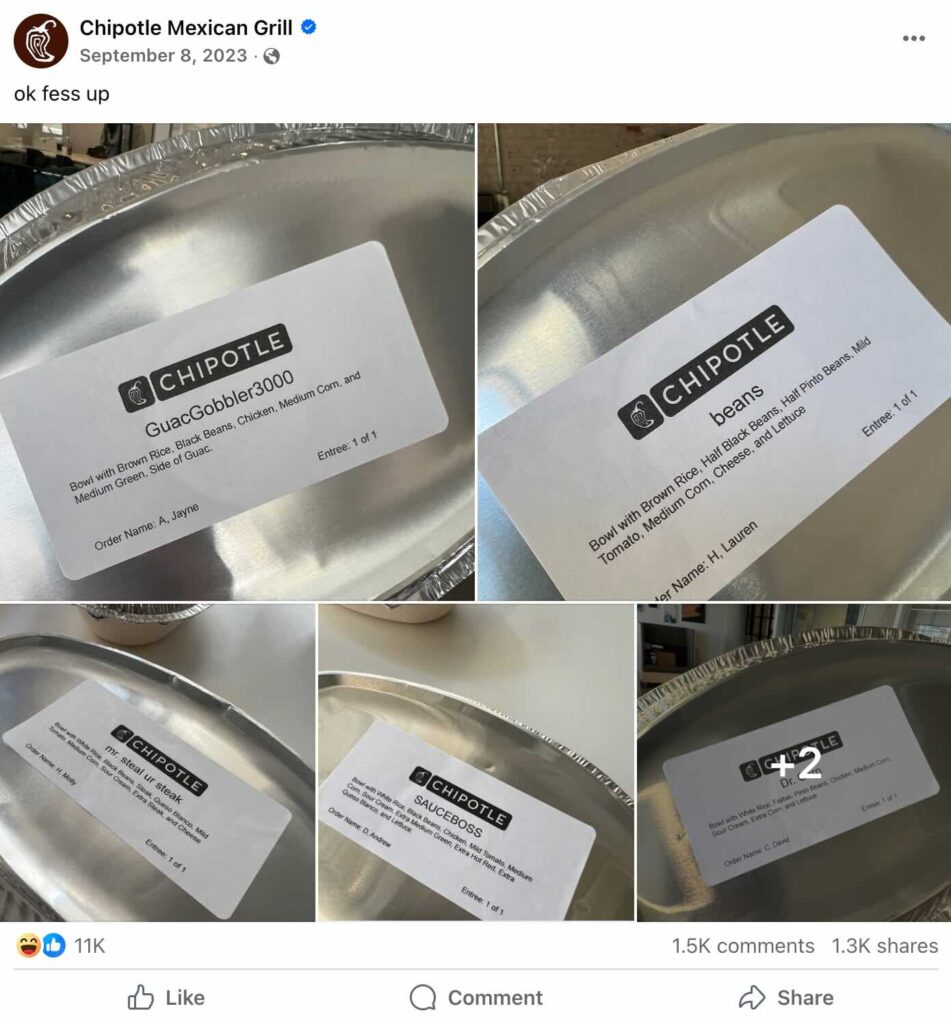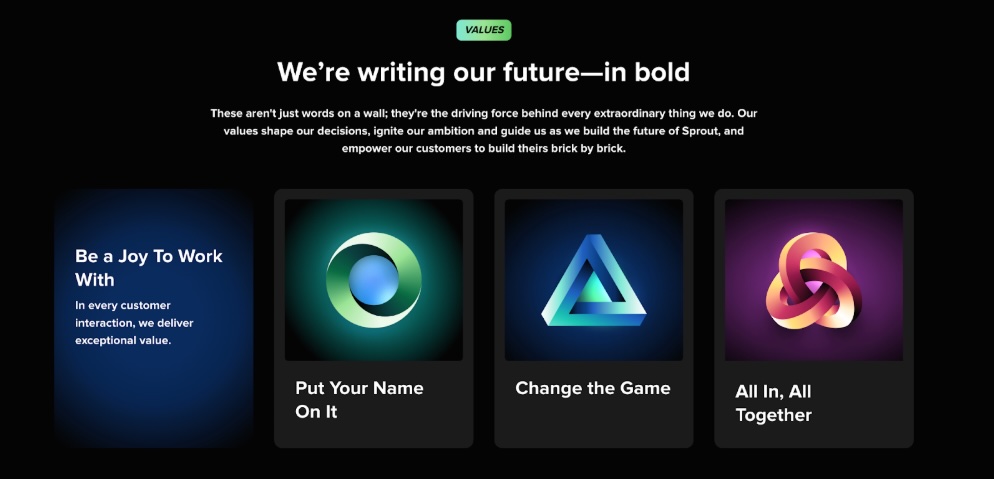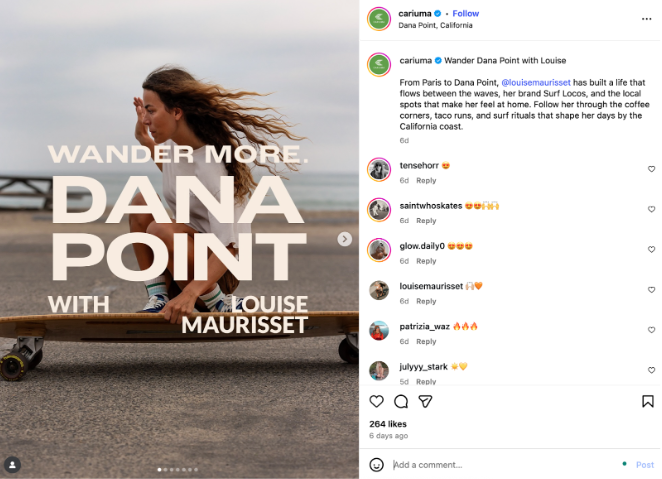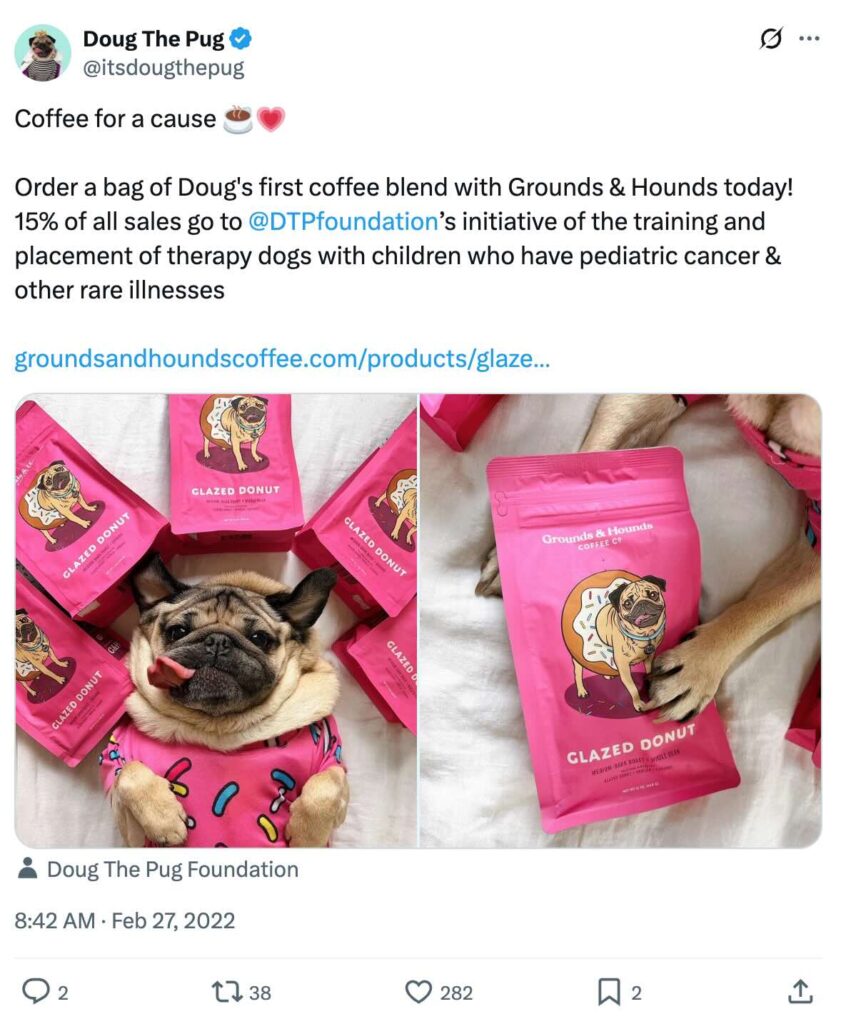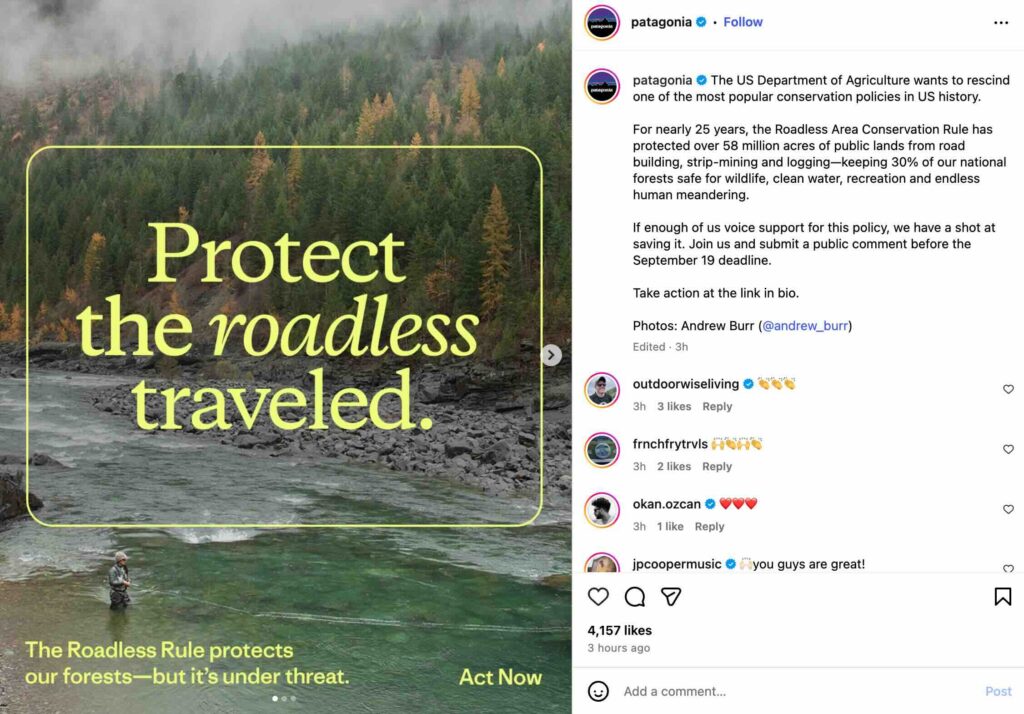As trust declines and consumer expectations rise, brand values have become essential. You can see this in how people judge brands on social media.
According to a Q3 2025 Sprout Social Pulse Survey, nearly half of social media users (47%) are more likely to buy from companies that speak out about specific causes or topics in the news, with this number rising to 63% for Gen Z. And according to a separate, Q2 2025 Pulse Survey, the boldest thing a company can do on social is be upfront about their products, services and what they stand for.
By incorporating your values into your brand strategy and your brand storytelling, you’re better positioned to build trust, strengthen your reputation and encourage consumers to buy from you.
Read on to see how leading brands put their values into action and to learn how to define and communicate yours on social media.
What are brand values?
Brand values are the beliefs that guide an organization’s business practices. They help leaders make strategic decisions and enable employees and customers to gauge whether the organization is living up to its stated values.
Along with several other foundational elements (like mission, vision, story, voice, etc.), a brand’s values play a key role in its identity and perception, both internally and externally.
Why brand values are important for businesses
If you want to build a memorable brand with a loyal following, you need brand values to stand out, build trust and connect with audiences on a deeper level.
To demonstrate this, let’s consider the customer journey of buying a pair of shoes. While brands might be similar in terms of price or design, the decision often comes down to which brand’s values align with the consumer’s own. Values are the difference between “I like this shoe so I’m going to buy it,” and “I like what this brand stands for, and buying from this brand makes me feel good, so I’m going to buy this shoe.” Brand values establish an emotional connection between consumers and your brand.
This shoe example illustrates the impact that brand values have on purchasing decisions. Values give your brand something to stand on that’s bigger than your products or services. But here’s the catch: You need to communicate your values clearly and regularly so consumers associate them with your brand.
Working your values into your social media content strategy makes it easier to tell authentic stories that reflect what your brand stands for. According to The 2025 Sprout Social Index™, consumers ranked authenticity as the most important trait of brand content.
And authenticity pays off. According to Sprout’s Q2 2025 Pulse Survey, 41% of social media users say they’re most likely to call out a brand for unethical behavior. This shows people are paying attention, and when you consistently back up your values with action, you stand to strengthen your brand reputation.
6 examples of strong brand values
Value-driven brands inspire brand loyalty and motivate people to act. By building on strong values, you can create a workplace employees are proud to be a part of, a brand consumers trust and a presence followers want to engage with on social.
The first step is making your values visible. Values-driven businesses don’t shy away from making their values accessible.
Below are several brands that are leading by example with strong values. Feel free to use this as inspiration you can apply to your own brand values.
1. Sprout Social
Sprout’s values are built into the tools we develop and the way we present ourselves to customers. After 15 years of innovation, we recently refreshed our values to reflect where we are now.
Here are Sprout’s updated values:
- Be a joy to work with
- Put your name on it
- Change the game
- All in, all together
By creating solutions like Sprout’s Social Customer Care tool, we help brands be a joy to work with by streamlining workflows and allowing people to focus on meaningful interactions that strengthen customer relationships and build loyalty.
Sprout lives its put your name on it principle by consistently publishing original research, like The 2025 Impact of Social Media Marketing Report, to share insights that benefit marketers across the industry.
You can see how Sprout is all in, all together through external partnerships like our expanded integration with Salesforce, and in the fact that employees and executives are often the voice of our social content. These examples show that we value collaboration, both internally and externally.
The lesson here is that evolving your values is just as important to staying authentic as living them. Instead of clinging to values that no longer serve your brand, updating them as your brand evolves can open up new ways to innovate and connect.
2. Marriott International
Marriott International, a well-known hospitality brand, has values that align with its reach and focus.
Marriott International’s core values include:
- We put people first
- We pursue excellence
- We embrace change
- We act with integrity
- We serve our world
Marriott International puts people first by recognizing hardworking employees with the J. Willard Marriott Awards of Excellence, then celebrating the winners on social by sharing what drives them.
Marriott International also runs several initiatives in line with its commitment to serve our world. HotelHelp, a pilot program that donates rooms to provide emergency accommodation for human trafficking survivors, is one of these initiatives.
Through these examples, you can see how Marriott International’s values unify every internal and external touchpoint of its global brand strategy. Regardless of your brand’s size, you should be striving for consistency because it’s a building block of trust.
3. Blueland
Blueland, a plastic-free cleaning products company, built its whole brand around its values.
Blueland’s values include:
- Always Innovating
- No Harsh Chemicals
- Clean without Compromise
- Sustainability
The product range reflects the brand’s commitment to all of its values. Blueland offers compostable, refillable packaging and innovative liquid-free formulas made with clean ingredients.
Beyond the products, Blueland teaches its followers about sustainability in an approachable way on social media. For example, a TikTok “Spelling Bee” skit featuring co-founder Sarah Paiji Yoo playfully educates viewers on hidden plastics in everyday products.
Edutainment content like this is exactly what 66% of social users say they find most engaging, according to The 2024 Social Media Content Strategy Report.
Blueland shows that credibility comes from talking clearly about your product features and benefits while also speaking about the larger issues behind your values. The best brands balance both.
4. Reformation
Reformation is a Los Angeles-based sustainable fashion brand. Even though they aren’t listed anywhere on the website, the brand shows it values environmental responsibility and transparency through its actions.
The brand maintains environmental responsibility by tracking the environmental footprint of its garments using RefScale, and transparency by sharing quarterly sustainability reports. On its website, the brand takes a more serious tone when discussing these initiatives, while on social it keeps the tone lighter yet still aligned with its values.
For example, its “Sustainability Street Smarts” TikTok series asks people on the street casual questions related to sustainability, like “would you date someone who doesn’t believe in climate change?”
Reformation stays true to its brand voice and ensures its messaging reflects its commitments, while adapting its tone to the context (website vs. social media). This shows your values don’t need to sound the same everywhere, and in fact, they shouldn’t.
5. Chipotle
Chipotle Mexican Grill, the beloved fast-casual chain, only has one overarching value: everything we do is real.
So what does being real mean? Sourcing fresh, high-quality ingredients, treating employees and partners with respect and being authentic and transparent on social media and in brand communications.
This value also comes through in Chipotle’s irreverent social content on platforms like TikTok, Instagram, X and Threads. For example, the brand captioned a post on Facebook, “ok fess up,” and paired it with photos of orders with funny names people made up on them, making it seem like these were photos people sent to the brand.
The voice and writing style in posts like this mirror how Chipotle’s audience actually talks and engages online, making them feel more authentic and less corporate, which aligns with the company’s central brand value.
Chipotle demonstrates how having one central value leaves room for range and creative interpretation while providing focus. This may be an approach you want to keep in mind when defining your brand values.
6. Patagonia
When you think of a value-driven brand, you probably think of Patagonia, the outdoor apparel company.
Here are Patagonia’s values:
- Quality
- Integrity
- Environmentalism
- Justice
- Not bound by convention
As a few examples of how Patagonia practices its values of environmentalism and justice on a business level, it’s part of 1% for the Planet and champions environmental activism through Patagonia Action Works.
But what Patagonia is most known for is its brand storytelling. It puts the apparel on display in an organic way that inspires people to get outside. The brand’s “Microbeta” YouTube series about Patagonia ambassadors tackling iconic and challenging climbs is a good example of this.
By grounding its storytelling in and around the community and lifestyle Patagonia supports, it creates a sense of pride and belonging. This kind of emotional connection is what makes brand storytelling so worthwhile.
How to define your own brand values
Defining your brand values isn’t a matter of pulling them from thin air. You need to develop them based on the perspectives, experiences and priorities of your employees and fans. Otherwise, your brand values may not come across as authentic or be actionable across the entire organization.
Follow the tried-and-tested steps Sprout uses to formulate its values below to define your values.
1. Establish your team
First, it’s important to bring in a diverse set of voices and points of view. Invite people from different departments, such as marketing and human resources, as well as opening the invitation to highly engaged employees or team members who interact directly with customers.
Make sure you have a sampling of different levels throughout the organization (i.e., not just senior leaders). Sprout did this by sending an open invitation to the entire company and then whittling it down to a working group of 15 individuals.
2. Gather feedback
For the values development process to be successful, employees should feel ownership in the process. This is why Sprout’s working group held department-based focus groups to harvest feedback from across the company (among other responsibilities).
Similarly, your facilitators should collect input from various departments and individuals. By the end of these sessions, you should have a sizable list of ideas.
Social listening can also help here, providing details about what your customers love about your brand and what they think you could do better.
3. Identify themes
With so many ideas to consider, it could get overwhelming to narrow down your set of values. Start by identifying themes among the submissions. For example, there might be 10 or 15 similar ideas around employee growth that can be combined into a thematic grouping.
Be sure to focus on your existing culture and your aspirations for the future. Where are you today? But also—where do you want to go?
4. Refine and communicate
Now that you’ve developed a slimmer list of themes, it’s time to present them to the executive team for feedback. This council will refine the themes down to a manageable set of values that reflect the input and research gathered throughout the process.
From there, focus on internal communications to ensure every employee understands and connects with your newly established values. Leadership should share the final values widely and in multiple formats, including in places like team meetings, internal newsletters and intranet posts.
The goal is to help employees see themselves in the values, and video is one of the best ways to do that. Sprout’s new values video is a good example because it explains the meaning behind each value, shows how they guide decisions and encourages employees to bring them to life in their daily work.
By communicating thoughtfully and consistently, internal comms turns brand values into a shared way of working and making decisions.
How to communicate your brand values using social media
To communicate your brand values using social media, you need to make them part of your content strategy. This shows that your values are an inherent part of the way your company operates, attracting more like-minded consumers and building goodwill among your audience.
Here are a few ideas to help you start showcasing your values on social media.
1. Put them on your website
Technically, this isn’t a social media tactic, but it’s so important it needed to be included here.
The more visibility and transparency your audience has into your values and the things that make your brand tick, the more connected they’ll feel. And as we’ve already established, that leads to more sales. While social media is a great place to showcase your values, don’t forget to include them on your website, too.
You can add them to your about page, create a new page to share your mission and values or write a blog post specifically about your values. No matter where you put them, you’ll want to include a brief and clear description of what each value means.
For instance, Sprout’s about page explains that “Be a Joy to Work With” means “in every customer interaction, we deliver exceptional value.” By translating its values into plain language, Sprout makes them easier to understand and identify in action.
2. Share your story
People like stories. It’s how we make sense of the world. And brands that are really good at telling their stories often build a loyal following, too.
Brand storytelling goes beyond the facts to show the purpose and values behind your business. Your product or service is still present, but it fades into the background so the focus is on the human stories around your brand.
When done well, brand storytelling inspires people to take action: become brand ambassadors, make a purchase, engage on social or engage in the lifestyle your brand promotes. You can tell the stories of customers or employees, or you can partner with influencers.
Cariuma’s “Wander More” series on Instagram is a strong example of brand storytelling through influencer marketing. Instead of spotlighting its sneakers, the brand followed skater Louise Maurisset through her daily surf rituals, coffee stops and community connections, showing how she embodies Cariuma’s values of sustainability and conscious living.
Take Cariuma’s lead, and tell human stories related to your brand values to make your brand more relatable and your content more engaging.
3. Partner with influencers
Borrowing the cache of an influencer or content creator who shares similar values can multiply the effect of your values-driven social content.
Every authentic influencer partnership starts with research. You can find someone who aligns well with your values manually, or use Sprout Social Influencer Marketing to make the process faster and easier. It helps social marketers find creators who share their brand values, track the impact of partnerships and maintain compliance and transparency.
If the goal is to share your values through an influencer-brand partnership, one way is to raise funds for a shared cause you both care about. You can do this by developing a special product, planning a fundraising event or creating a social media challenge and cross-promoting it.
For example, Grounds and Hounds Coffee partnered with Doug the Pug, a pet influencer, on a limited edition coffee blend where a portion of the sales went to the Doug the Pug Foundation.
As an alternative, you can also provide influencers with a creative brief that highlights your brand’s values instead of product features.
4. Partner with nonprofits
Another example of “two accounts are better than one” is partnering directly with nonprofits that aid causes related to your values. This can go a long way toward helping you authentically embody your brand values on social.
You might collaborate on a project or simply interact with each other, like sharing each other’s content. Either way, the symbiotic amplification is a win-win.
Rothy’s created a collection of bags from repurposed materials in support of Feed Projects, and debuted the collaboration on Giving Tuesday.
Working with a nonprofit not only helps raise awareness for a cause your brand (and audience, by extension) cares about, but also shows that your values have an actual impact.
5. Showcase your employees
When you think about a company’s values, you can’t forget about the employees. A brand’s commitment to its values is also illustrated in the way it treats its team members. And employees are the ones living your values in action every day.
You can showcase your employees by making them the voice of your brand on social, or by creating a content series, like #LifeAtGoogle, that gives audiences a look into the values that shape the company culture.
Another way to humanize your brand and increase your reach is through employee advocacy, which is where you encourage employees to share brand-related content on their own social media networks. Tools like Sprout’s Employee Advocacy solution make this easy by giving teams a platform to share company-approved content.
6. Keep up with current events
Keep your brand feeling fresh and relevant by weighing in on things that are happening in the world right now on social media. The past few years have shown that consumers want companies to stand behind what they say they believe.
Patagonia does a good job of this. The brand isn’t afraid to stand up for environmental issues, which has earned it a loyal fan base. For instance, they recently called on their followers to take action to protect The Roadless Rule, a conservation policy that protects millions of acres of US forests from logging, mining and road building.
While this type of content can be polarizing, when you make it crystal clear where you stand on important issues on social, it ultimately helps you curate an audience that shares your principles.
Embody your brand values to build trust
Your brand values are just one piece of the puzzle when it comes to earning trust and building your credibility. Now that you’ve developed them, you’re well-positioned to make strategic decisions and tell authentic stories on social.
Download our social media audit template to make sure your values are accurately reflected in your social content.
The post How to define and share brand values (with examples) appeared first on Sprout Social.

